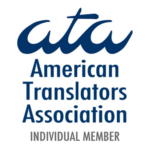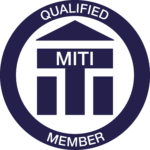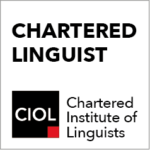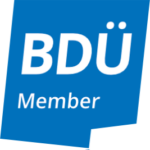Quality translations
for official use.
I am accredited by the American Translators Association (USA), the Institute for Translation and Interpreting (UK), and the Chartered Institute of Linguists (UK).

Digital-nomad lifestyles.
International families.
Corporate transfers.
Medical visits abroad.
If you travel to another country, you’re probably going to generate paperwork. And if you go for any extended period of time, that paper can quickly grow into a pile.
People who move internationally or travel overseas a lot often need copies of vital documents in more than one language.
And when you return home to the United States or United Kingdom, you may well need to show what you’ve been up to while you were away.
As a fully accredited professional French-English translator, I can provide certified translations of all your documents, including:
- Birth certificates
- Marriage certificates
- Immigration documents
- Medical records
- Legal and financial documentation
- Employment records
‘Why hire a pro?’
There are lots of ways to get a translation done, but they don’t all give you:
- Reasonable fees
- Prompt delivery
- High quality
- Peace of mind
Lots of low-cost translators and free machine-translation or AI tools can turn around documents quickly and cheaply. But often, you get what you pay for. If you’re dealing with a government, a bank, an employer, or an admissions office, you need to have it done right.
You can’t run the risk of “AI slop,” “hallucinations,” or substandard work. You need a proven professional.
Like me.
Need an
official document
translated?
‘What Is a Certified Translation?’

One thing a certified translation is not: “court-approved.” That’s because in the USA and UK, such a thing doesn’t exist.
In “civil-law” countries, including France, Germany, and Italy, translators are sworn by a court of law. “Sworn” translations are legally binding, and authorities there may only accept translations by sworn translators.
The United States, the United Kingdom, Canada, Australia, and other countries with so-called “common-law” systems generally do not even have sworn translators.
Instead, their systems rely on certified translations into English.
That means that translators themselves certify the accuracy of their translations.
But if there is no such thing as a sworn translator, anyone can legally be a translator, and the translator certifies his, her, or their own work . . . how does a translation into English become officially acceptable?
‘How Do Certified Translations Work, Then?’
Because there’s no official list of court-approved translators in these countries, many employers, educational institutions, and government offices rely on established professional organizations for reliability and quality control.
These organizations include the American Translators Association (ATA) in the USA, the Chartered Institute of Linguists (CIOL) and Institute for Translation and Interpreting (ITI) in the UK, and similar bodies in their respective countries.
You may be told by an American university, for example, that your translation has to be done by an ATA-certified translator, and the translator’s seal has to be attached.
That’s where I come in.
For French into English, I am a Certified Translator (CT) with the ATA, a Member of the Institute for Translation and Interpreting (MITI), and a Chartered Linguist (CL) with the CIOL.
That means I’m fully qualified to certify the quality of my work, I am proven to provide the highest-quality translations around, and my translations meet common requirements for official use.
‘I Want To Learn More.’
So many aspects of moving between countries can become confusing. This is one of them. Let me help.
First, if you are not clear about your exact requirements, ask the organization that wants a translation from you. They should be able to tell you what you need.
For more background information and explanations of certified translations in the United States, visit the ATA website. United Kingdom readers should check the ITI site or the CIOL site.
Info, Queries, Quotes
For reliable English translations with an ATA, ITI, or CIOL seal . . .



